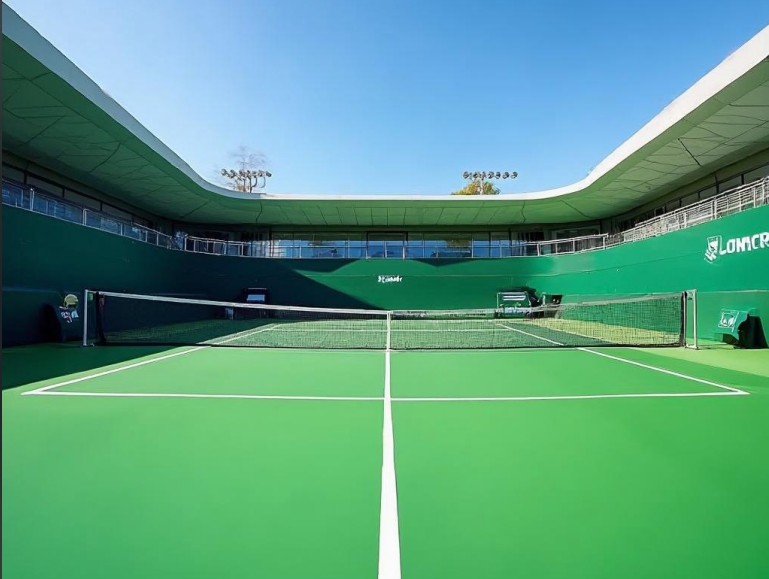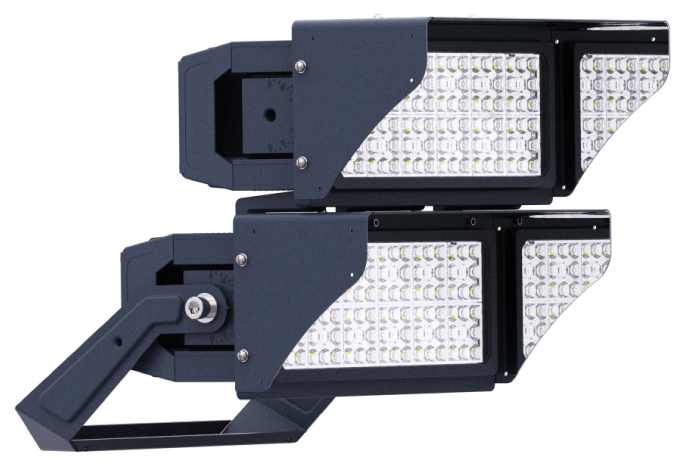What is the Best Lighting for A Tennis Court
What is the Best Lighting for A Tennis Court

Designing best lighting for a tennis court requires balancing visibility, energy efficiency, and compliance with international standards. Drawing from the ITF Facilities Guide (2020), this article outlines the technical requirements, technologies, and best practices for achieving world-class illumination.
1. Core Lighting Standards
Illuminance Levels
The ITF aligns with the European Standard EN 12193:2008, defining three lighting classes:
Class I (Professional Tournaments):
Outdoor: Minimum 500 lux (horizontal illuminance), uniformity ≥0.7, glare rating (GR) ≤50.
Indoor: Minimum 750 lux, uniformity ≥0.7, GR ≤50.
Class II (Regional/Club Matches):
Outdoor: 300 lux, uniformity ≥0.7.
Indoor: 500 lux, uniformity ≥0.7.
Class III (Recreational Play):
Outdoor: 200 lux, uniformity ≥0.6.
Indoor: 300 lux, uniformity ≥0.5.
Uniformity ensures consistent light distribution, critical for tracking high-speed balls.
Glare Control
Glare disrupts player vision and spectator experience. Key strategies include:
Using sharp-cutoff luminaires to direct light precisely onto the court.
Mounting fixtures at 8–12 meters (outdoor) or parallel to sidelines (indoor) to minimize direct sightline interference.
Maintaining GR values <50 for professional matches.
Color Quality
Color Temperature: ≥4,000K (neutral white) enhances contrast between the ball and court.
Color Rendering Index (CRI): ≥80 ensures accurate color perception for televised events.
2. Recommended Lighting Technologies
LED Lighting
LEDs dominate modern installations due to:
Energy Efficiency: 40–60% savings over metal halide lamps.
Longevity: 50,000–100,000 hours lifespan.
Instant Control: Supports dimming and smart system integration.
Example: The ITF highlights modular LED arrays in the Beijing Olympic Tennis Center, achieving 1,200 lux with 0.8 uniformity.
Smart Lighting Systems
IoT-enabled controls optimize energy use:
Motion Sensors: Activate lights only during play.
Multi-Scenario Modes: Adjust brightness for training (70% power) vs. matches (100%).
3. Installation Guidelines
Outdoor Courts
Fixture Placement: Install poles on longitudinal sides (2–4 per side) at 8–12m height.
Spill Light Management: Adhere to EN 12193’s obtrusive light limits (e.g., ≤10 lux vertical illuminance on neighboring properties in urban areas).
Indoor Courts
Ceiling-Mounted Luminaires: Position outside the Principal Playing Area (PPA) to avoid shadows.
Background Colors: Use blue or green walls to improve ball visibility.
4. Maintenance and Cost Efficiency
Regular Cleaning: Dust reduces light output by 20%; annual maintenance is mandatory.
Lamp Replacement: Replace all lamps simultaneously to maintain uniformity.
Cost Analysis:
LED systems reduce long-term costs despite higher upfront investment.
Metal halide lamps incur high replacement fees (10–15-minute warm-up time).
The best tennis court lighting combines LED precision, smart controls, and strict adherence to ITF and EN 12193 standards. By prioritizing illuminance uniformity, glare reduction, and energy efficiency, facilities enhance player performance, spectator experience, and operational sustainability.
5. Related Product

6. People Also Ask
Q: What type of lighting is best for a tennis court?
A: The best lighting for tennis courts is LED lighting. LEDs offer superior brightness, energy efficiency, longevity, and customizable light distribution. They also minimize glare and provide consistent illumination, which is critical for player performance and safety.
Q: What is the recommended brightness (lux level) for a tennis court?
A: For recreational play, 200–300 lux is sufficient. For competitive or professional matches, 500–750 lux is recommended. The International Tennis Federation (ITF) suggests higher lux levels for televised events (up to 1,500 lux) to meet broadcast standards.
Q: How many light fixtures are needed for a standard tennis court?
A: A full-size tennis court (78' x 36') typically requires 6–8 LED fixtures mounted on poles around the perimeter. The exact number depends on pole height, beam angle, and desired lux levels.
Q: What color temperature is best for tennis court lighting?
A: A neutral to cool white (4000K–5000K) color temperature is ideal. It mimics daylight, enhances visibility, and improves contrast for tracking the ball.
Q: What standards govern tennis court lighting?
A: Key standards include:
ITF guidelines for competition-level lighting.
IESNA RP-6-15 (Illuminating Engineering Society recommendations).
Local regulations for light pollution and safety.
Q: How much does it cost to light a tennis court?
A: Costs vary based on lighting type and design:
LED systems: 5,000–5,000–15,000+ (including installation).
Traditional systems (e.g., metal halide): Lower upfront cost but higher long-term energy/maintenance expenses.
Q: What maintenance is required for tennis court lights?
A: LED systems require minimal maintenance (occasional cleaning and inspections). Traditional bulbs (e.g., metal halide) need regular replacements (every 1–2 years).
_thumb.jpg)